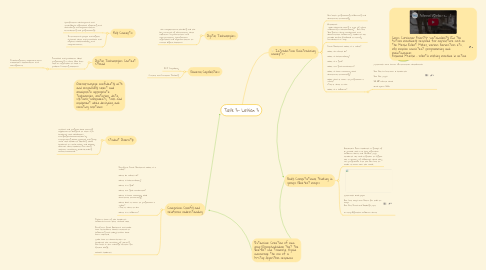Task 3- Lesson 3
by Steven Styles


1. Conclusion: Clarify and reinforce understanding
1.1. Reinforce Focus Questions: What is a robot? What do robots do? What is sustainability? What is a grid? What are grid coordinates? What is some commonly used directional terminology? What does it mean to programme a robot? (Tell it what to do) What is a sequence?
1.2. Present some of the student’s sequences (ones that worked well). Reinforce focus questions and make sure all student sheets related to sequencing and today’s lesson have been collected. Make sure to demonstrate to students the necessity of putting Bee-bots in the recharge station for future usage. Dismiss students.
2. Key Concepts:
2.1. specification (descriptions and techniques), algorithms (following and describing) and implementation (translating and programming)
2.2. Interactions (people and digital systems, data and processes) and impacts (sustainability and empowerment).
3. Digital Technologies Content Strand
3.1. Processes and production skills- programming a robot (Bee-bot) with an algorithm to solve a problem-Creating Solutions
3.1.1. Investiagation, implementaton, evaluation, collaboration and management
4. Overall-engage confidently with and responsibly select and manipulate appropriate technologies, materials, data, systems, components, tools and equipment when designing and creating solutions:
5. Digital Technologies:
5.1. -use computational thinking and the key concepts of abstraction; data collection, representation and interpretation; specification, algorithms and implementation to create digital solutions
6. General Capabilities:
6.1. ICT Capability
6.2. Critical and Creative Thinking
7. Student Diversity:
7.1. Lessons and program have learning adjustments designed to cater for students with disabilities (Language/communicative) by incorporating visual prompts and group work with students. Allowing these students to work closely and visually observe what students are doing without necessarily understanding verbal commands
8. Introduction: Reintroducing concepts-.
8.1. Bee-bots, programming, sequencing and directional terminology
8.2. Activities: -Video demonstrating a type of robot required for sustainability. --Bee-Bot 3x4 grid to show coordinates and demonstrate sequencing. Students will provide verbal feedback to clarify coordinates on map
8.3. Focus Questions: What is a robot? What do robots do? What is sustainability? What is a grid? What are grid coordinates? What is some commonly used directional terminology? What does it mean to programme a robot? (Tell it what to do) What is a sequence?
8.3.1. Materials: View screen (Interactive whiteboard) Bee-Bots (1 between 4 students) Bee-Bot Maps BB-88 robotic droid Grid Space (3x3)
